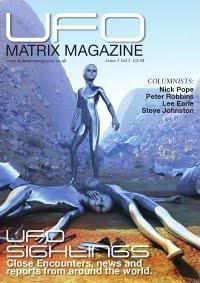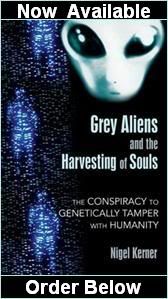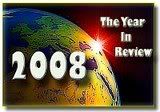 The CoRoT spacecraft.
The CoRoT spacecraft.Credit: CNES/D.Ducros
Ten new exoplanets have been discovered by the European satellite, CoRoT. Confirmed via meticulous, ground-based observations, these exoplanets exhibit a wide variety of masses, densities, orbital parameters and other properties, highlighting the broad diversity of planets around stars other than our Sun. The inventory includes seven hot Jupiters, a planet smaller than Saturn and a system of two Neptune-like objects orbiting the same star. The results have been announced today, 14 June 2011, at the Second CoRoT Symposium held this week in Marseille, France.
CoRoT is the first space mission dedicated to the search of planets outside our Solar System's realm. In more than 4 years of operations 26 new exoplanets have been discovered with CoRoT, bringing the total number of exoplanets known thus far to 565.
When the hunt for planets around stars other than the Sun began, over 15 years ago, achieving a detection was the primary goal of the field. After almost two decades of research, great technological progress, and the discovery of several hundred exoplanets, the focus has now shifted towards a more analytical approach. Astronomers exploit the joint power of dedicated space-based facilities, such as CoRoT, and high-quality data from the ground in order to pin down the characteristics of a large number of planets. With these data at hand, it is possible to tackle fundamental questions concerning how exoplanets form and what kind of objects emerge from the various formation scenarios. The new results, announced on 14 June 2011 at the Second CoRoT Symposium, highlight once again the diversity of the properties observed within the 'zoo' of exoplanets.
"Ever since the early days of exoplanet astronomy, we've been amazed by the variety of planets that have been discovered: gaseous giants larger than Jupiter and smaller, rocky bodies, down to masses comparable to the Earth's," notes Malcolm Fridlund, ESA's project scientist for CoRoT. The configurations of the systems are also highly diverse, with a wide range of orbital periods, and about 70 systems in which multiple planets have been detected. "The new set of ten planets that we announce today are no exception, exhibiting as they do a rich list of very interesting properties," he adds.
Of the most recent additions to the CoRoT family, seven are so-called 'hot Jupiters', one is smaller than Saturn (CoRoT-22b) and the other two (CoRot-24b and CoRot-24c), with masses similar to that of Neptune, have been found orbiting the same star. The densities of these planets, which are all gaseous, span a wide range, from values similar to that of Saturn, the least dense planet in the Solar System, to higher values comparable to the density of Mars.
The host stars also exhibit rather mixed properties, ranging from a ten thousand million year old star - twice as old as the Sun - in the case of CoRoT-17b, to a rather young (about 600 million years) counterpart, in the case of CoRoT-18b. Observing planetary systems with such different ages is particularly useful when testing different scenarios of planet formation and evolution. Two of the planets (CoRoT-16b and CoRoT-20b) lie on highly elongated orbits, and explaining their survival on such orbits represents a challenge from the dynamical point of view. The double system of Neptune-like bodies is rather peculiar, and it will be monitored in the future to determine if it harbours other planets as well.
Since its launch in 2006, CoRoT has detected several hundred candidate planet-hosting stars. Each of them has to undergo a scrupulous validating procedure, in order to assess whether or not the observations truly represent the detection of a planet. This relies on follow-up observations conducted with an extensive network of ground-based telescopes. Astronomers from the CoRoT team, including a number of ESA researchers, collect a wealth of photometric and spectroscopic data in order to confirm that the detections are actually due to a planet and, in that case, to measure the parameters of the systems.
"Although the study of exoplanets is relatively young, we have already reached a stage where we can characterise the details of worlds orbiting other stars, and CoRoT is making a crucial contribution to this field," comments Fridlund. "With hundreds of systems observed to date, we no longer have to worry about 'taming the beasts' and we can dedicate our efforts to the 'zoology' of exoplanets, which is enormously enhancing our knowledge about planetary systems," he concludes.
Notes for editors
Since 1995, astronomers have discovered over 565 exoplanets by employing a number of techniques, including astrometry, radial velocity, the transit method, gravitational microlensing and direct imaging.
CoRoT is a 27-cm space telescope that searches for exoplanets with the transit method, which measures the tiny decrease in brightness when an object, such as a planet, passes in front of a star. Since its launch in December 2006, CoRoT has found 26 confirmed extrasolar planets. The number of possible extrasolar planets detected by CoRoT is even larger: 401 possible planet candidates detected with the telescope are in the process of being confirmed.
The CoRoT space mission is led by the French space agency CNES (Centre national d'études spatiales) with support from the European Space Agency (ESA), Austria, Belgium, Germany (DLR), Spain, and Brazil.
ESA has joined the mission by providing the optics and baffle for the telescope and testing of the payload. Through this collaboration a number of European scientists, from Denmark, Switzerland, the United Kingdom and Portugal, have been selected as Co-Investigators in open competition. As a result of ESA's participation in CoRoT, scientists from ESA's Member States also have access to the satellite's data.
ESA's Research and Scientific Support Department (RSSD) at ESTEC is a full partner in CoRoT by providing the on-board Data Processing Units (DPU's). The ESA PRODEX programme has supported the development of the CoRoT telescope baffle, and the software development and data processing of CoRoT light curves.
The ground stations used for CoRoT are located in Kiruna (S), Aussaguel (F) Hartebeesthoek (South Africa), and Kourou (French Guyana), with mission-specific ground stations in Alcantara (Brazil) and Vienna (A).
Data from CoRoT can only determine the radius of the planet. The measurement of the planetary mass requires observations from the ground using the Doppler wobble method. Additional measurements from the ground are also required to exclude other phenomena that may mimic a transit signal. Several ESA researchers are involved in the follow-up, analysis and interpretation of CoRoT data.
Source: European Space Agency
http://www.esa.int/esaCP/index.html
























